“Twas a brave man who first ate an oyster.” My mother prefers Little Neck clams with their tart briny flavor, and says that oysters “feel like snot going down.” In fact, what many refer to as a loogie is also referred to as an oyster in the local parlance, which kept me from trying one for a long time. As a kid, I once had a fishy fried oyster on my fried platter at the Arthur Treacher’s1, which was the “fancy restaurant” we went to, growing up. My father liked them raw, and much later in life I tried one of his at the Crabby Lobster, a short-lived restaurant attached to the Montclair Seafood Company. And a romance was born.
There is some contention over who first coined the phrase “twas a brave man,” but it remains an apt one, despite the fact that humans have probably feasted upon this slippery mollusks since the first time we saw a seabird crack one open for a snack. The Lenni-Lenape, who inhabited New Jersey before the colonists drove them out, ate so many that there is a mound of shells in Tuckerton that remains a landmark, is at least fifteen hundred years old, and extends at least nine feet below the soil. I visited the historic mound earlier this year:
I didn’t find any oysters there, but I did meet a lot of fiddler crabs. The New Jersey oyster industry died out last century and the water was only clean enough for it to return in the last few decades, but I can say that Delaware Bay oysters are very tasty, with the briny flavor of Prince Edward Island and the meaty sweetness of the Gulf. Sort of a perfect oyster, in my opinion. I sampled them at the Bayshore Oyster Festival, held at the Bayshore Center at Bivalve. Yes, the oyster industry was once so big that there’s a town called Bivalve, and another one nearby called Shell Pile.
The festival was to support the maintenance of the AJ Meerwald, a former oyster ship that now serves to give tours of the bay. The Bayshore center has a small museum, a gift shop, and working docks that bay fishing crews use. The Delaware Bay is probably the least-visited area of New Jersey, despite its natural beauty. It was colonized as early as 1638 by the Swedish—there’s still a town called Swedesboro, if little cultural influence remains—and like many areas where ships reigned and hard work was done, it is surprisingly diverse.
I headed to the festival with my oyster-loving pals Johnny and Cheska, and we learned some history as we waited in line for beer and oysters and listened to shanties played by a band of grizzled old seamen. There was quite a turnout for the festival, and the organizers were not prepared. The lines weren’t too long, and I’m glad the fundraiser turned out well. The benefit of waiting in line was having time to read signs detailing the history of the area. The oyster industry disappeared in the ‘50s due to a disease caught from transplanting West Coast oysters, an infection nearly as devastating as the influx of California Pizza Kitchens at our beloved malls.
Shell Pile now has a population of under 50, but in its heyday was home to a thousand mistreated workers in the oyster industry, mostly Black. They don't shy from unpleasant history here. This sign designates the village, with a tiny namesake; there are tales from back in the day, of massive piles of oyster shells in this area; this image on WikiCommons will give you an idea:
Oh, how the mightly have fallen:
Now the shells are repurposed to halt erosion and to make shell bags2 for oysters to grow on, so you can't buy a bunch to pave your driveway, which apparently was also a thing in the entire Delaware Bay area. Now, it's mostly Jersey Shore Gravel, which you can learn all about from my hero Brian Donohue. (Hint: it’s linked to those pretty, deadly blue holes in the Pine Barrens.)
Dint ga swemmin in the blue holes, ya shell bag!
The Oyster Festival had a few kegs of local brew, and of course we had to try them. I had the 609 IPA from Glasstown brewing, which was a decent ale. There were several oyster shuckers, including Valhalla (from Barnegat) and a food vendor with a pizza oven, who were making Oysters Rockefeller pizzas if you brought your own oysters. I highly recommend a visit to the Bayshore if Cape May is too touristy for you. I plan on visiting Sea Breeze at low tide, because some roads flood, and the nearby Charlesworth hotel in Fortescue, which has a steak & seafood restaurant with a lovely view of the bay. (If you beat me to it, share some photos.)
Get a taste of the salt air, take a ride on the Meerwald, and suck down (or hawk up) an oyster or twelve. Maybe you’ll see horseshoe crabs, those prehistoric denizens of the bay whose eggs feed migrating red knot seabirds, and whose blue blood is prized by the medical industry. I haven’t seen any in years, but I really haven’t gone looking. Maybe it’s time.
Think Red Lobster; they were a seafood joint started by an actor, who is now best remembered for his restaurants. And Last Night at the Lobster by Stewart O’Nan is a fine book, you ought to read it.
“Shell bag” is my new favorite insult, like the Scottish classic, “bawbag.”




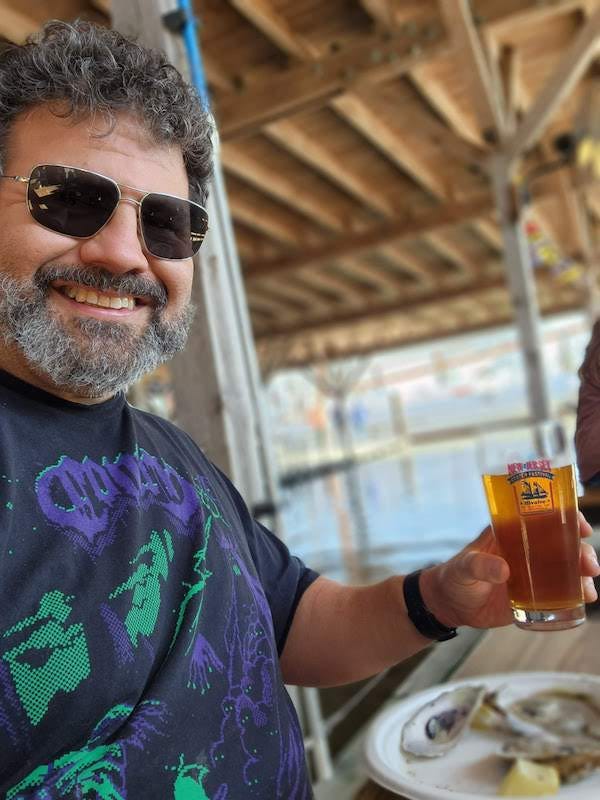
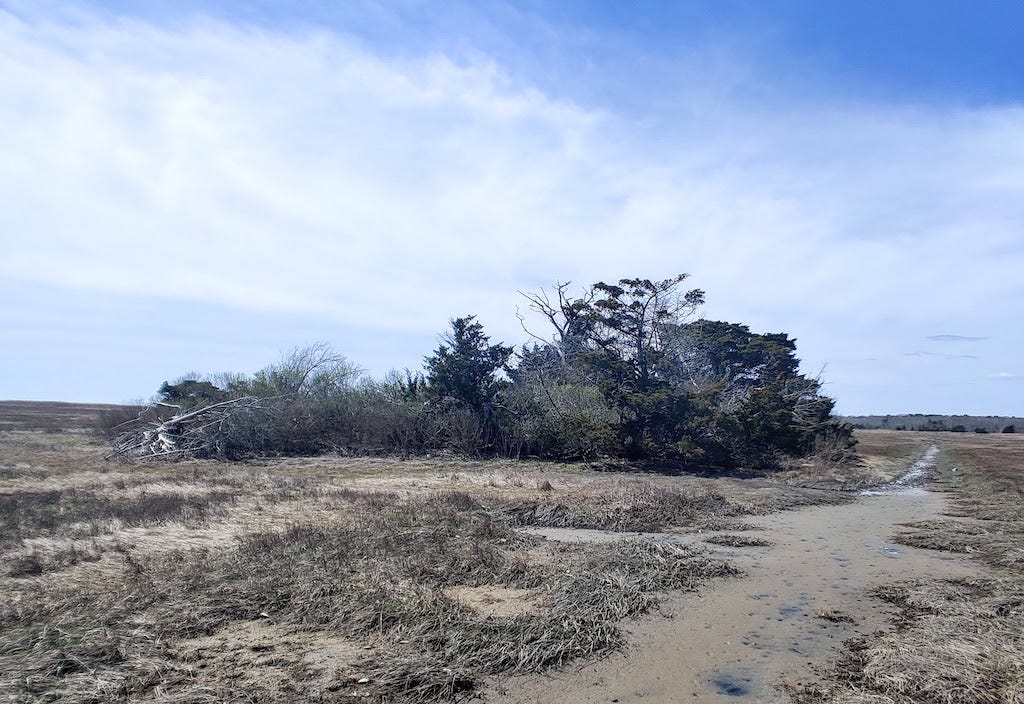
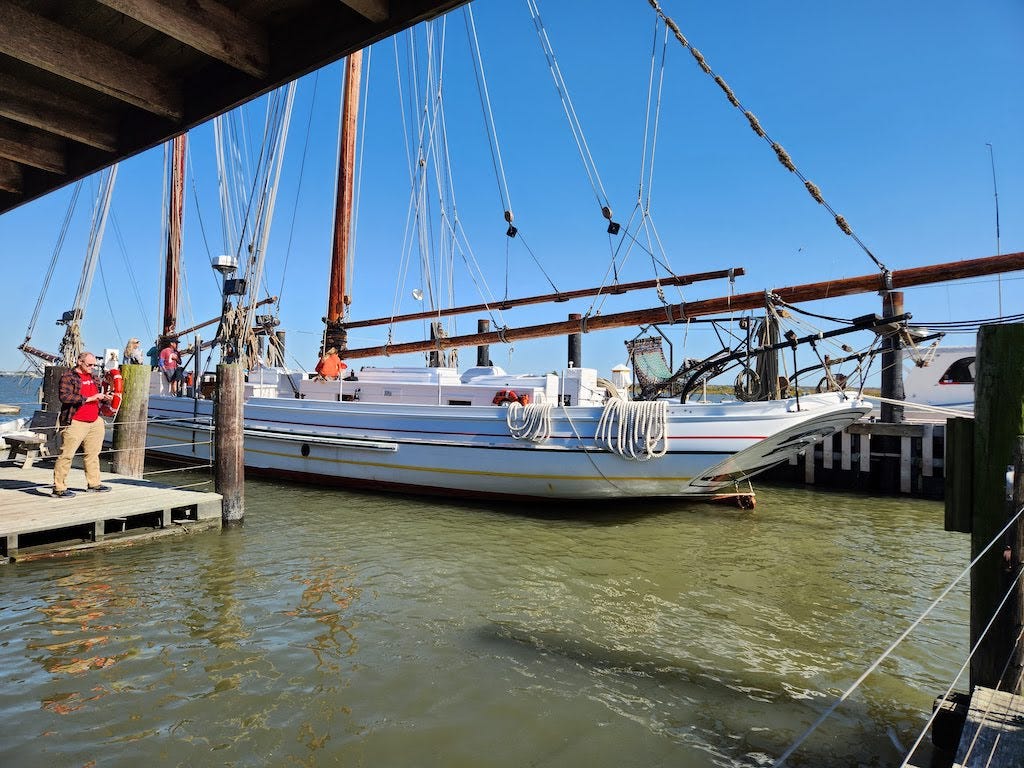
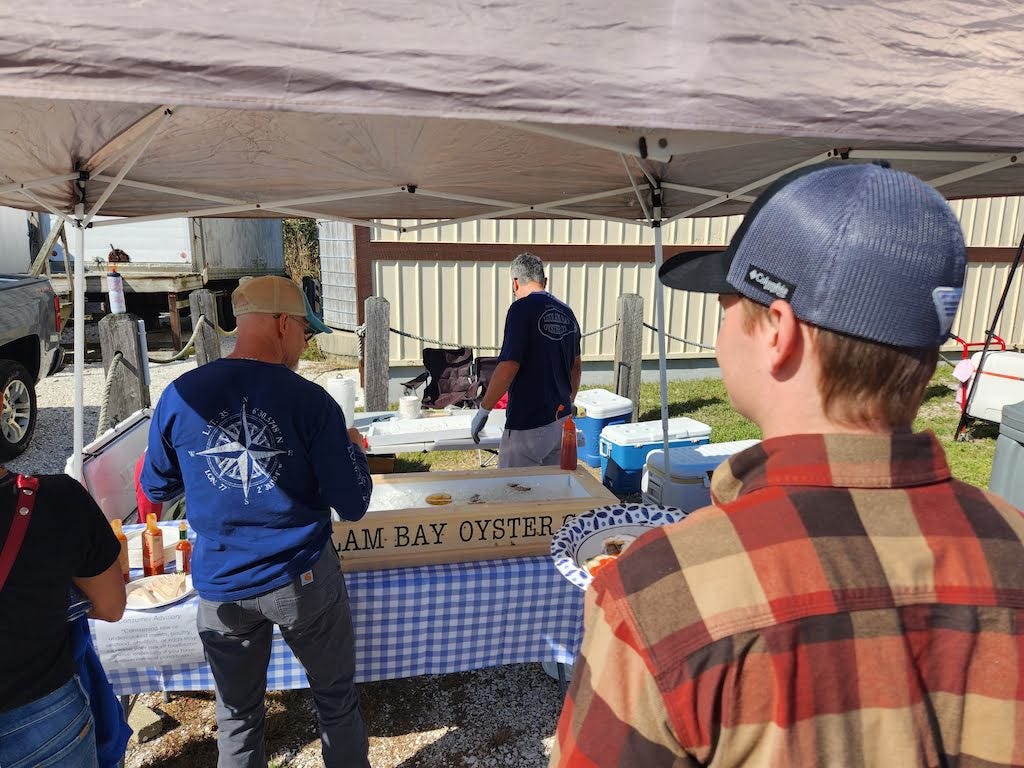
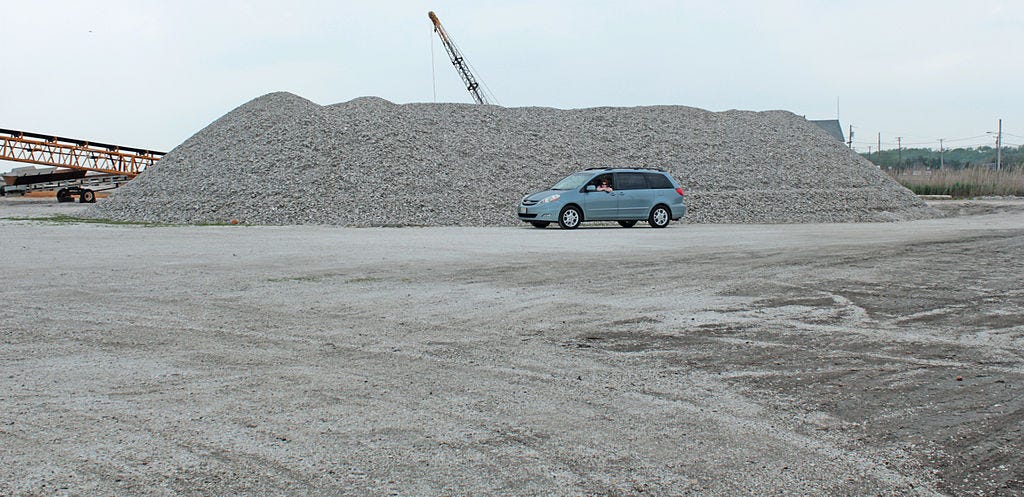
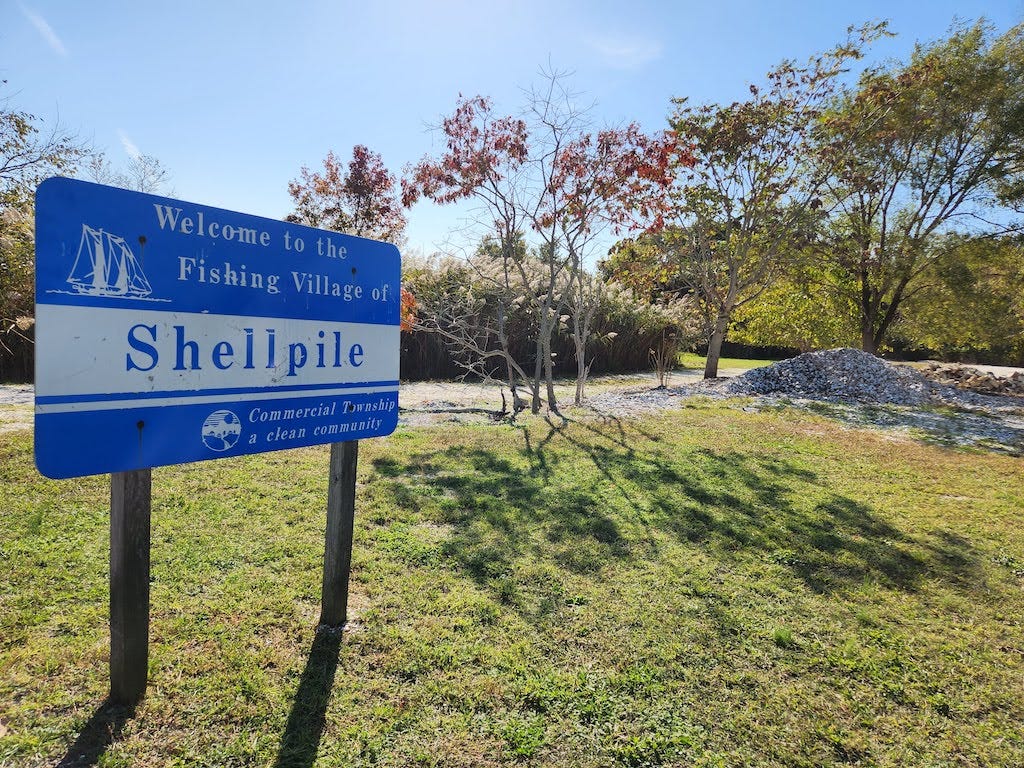
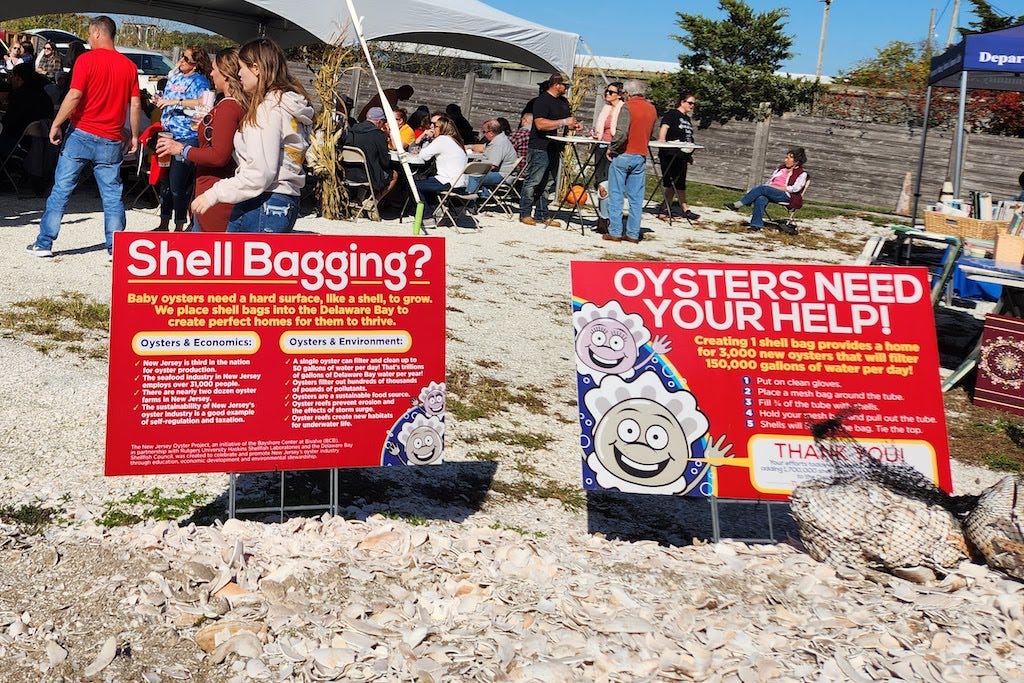
I know I complimented your thrift on the last story but when it comes to food porn I endorse rampant purple dionysian gluttony. I can regard an oyster with more curiosity than sneering now. You made them sound good.
THOMAS!
I'm... bivalve-curious.
I won't ask about snails. I WILL NOT